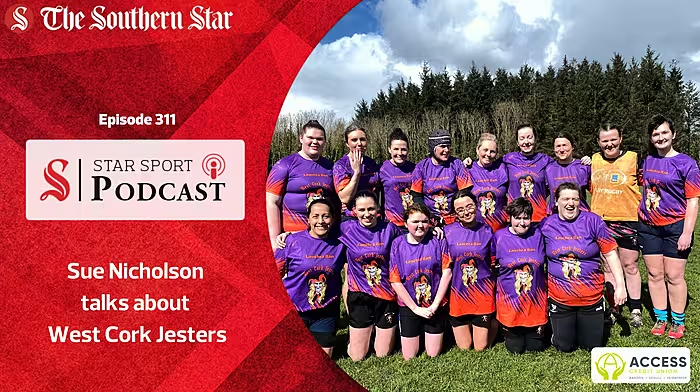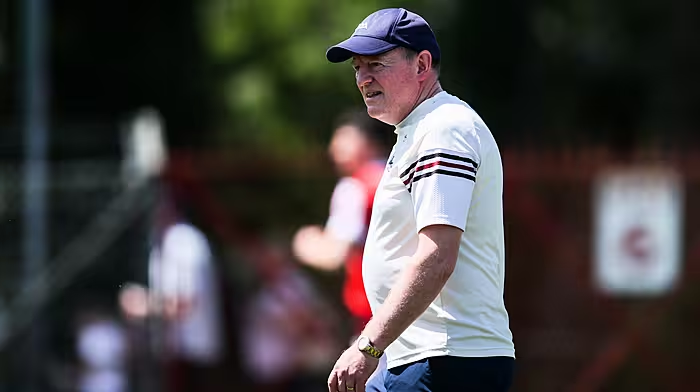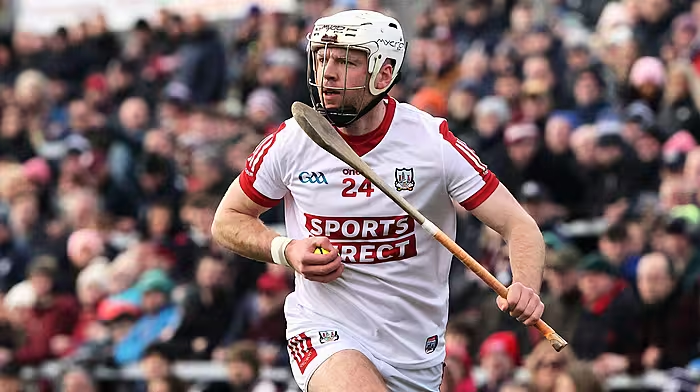For anyone involved with a team in the West Cork Schoolboys’ League, Tuesday night’s announcement that the move to ‘summer soccer’ had begun was hardly a surprise.
FOR anyone involved with a team in the West Cork Schoolboys’ League, Tuesday night’s announcement that the move to ‘summer soccer’ had begun was hardly a surprise.
The atrocious conditions experienced in the past two winters have seen huge chunks of the season pass without any games at all played, resulting in a backlog come the springtime and matches then played off at a rate of knots.
In these pages during February and March, Ger McCarthy had floated the notion of moving to the months when the weather was better and the monthly meeting of the league on Tuesday has seen that idea become a reality. The 2016/’17 season will be the last ‘normal’ campaign, with 2017/’18 set to be curtailed, allowing for the new mode to be introduced for a season lasting from March to November of 2018.
Transition
It’s a big change, certainly, though the transition period will allow for those who the change affects to get used to it. The Clare District Soccer League was the first to mirror the switch instigated by the League of Ireland in 2002, while the Dublin District Schoolyboys’ League announced in May that it would change from 2017 onwards.
As the WCSL statement pointed out, the move is compliant with the FAI Player Development Directive. A technical development plan published by the association’s high-performance director Ruud Dokter in December 2014 suggested that all underage leagues in the country move from winter to summer seasons, though uptake on that recommendation is only now beginning to be seen.
In purely developmental, environmental or meteorological terms, it makes sense. To allow for the best way of fixture-planning, it’s a no-brainer to schedule them for when the weather is best. From the point of view of developing players technically, it’s far easier to ping the ball about on a firm, dry pitch as opposed to squelching about in the mud on a drab and wet January. At national level, we have seen Irish clubs improve, something borne out by results in European competitions.
Of course, the climate in Ireland isn’t the most reliable – what’s far more reliable is that, if it’s raining at a Cork City game at Turner’s Cross, some wag will snort and say, ‘I thought we had summer soccer.’ Leaving aside the bad jokes, if there any postponements now, it will be easier to fit in games midweek.
But – and there’s always a ‘but’ – by ending the season in November you do have the risk of playing the most important games – cup finals and league deciders – when the weather is again turning. The question the league had to answer is whether to cater for the many or the best.
What you think of the WCSL’s move will probably be determined by where your sporting loyalties lie. Some will see this as a challenge to the GAA’s supremacy, forcing youngsters to choose between sports as combining both runs the risk of falling between two stools and frustrating two different management teams.
Not far off
The other side of that is that the GAA isn’t far off a year-long pursuit now anyway – at adult level certainly, if not fully so at underage – and even now the players are having to balance the playing of two sports, especially when postponements cause soccer overruns into the summer. Holidays are also likely to impinge on things, but that’s not a summer-only concern, either.
A question should also be asked as to why, in 2002, the League of Ireland move wasn’t replicated by all others? It stands to reason that all levels of a sport should operate to the same timetable.
It’s too late to change that now, obviously. The WSCL is tasked with doing what’s best for its members and players, and this seems to tick a lot of boxes.









